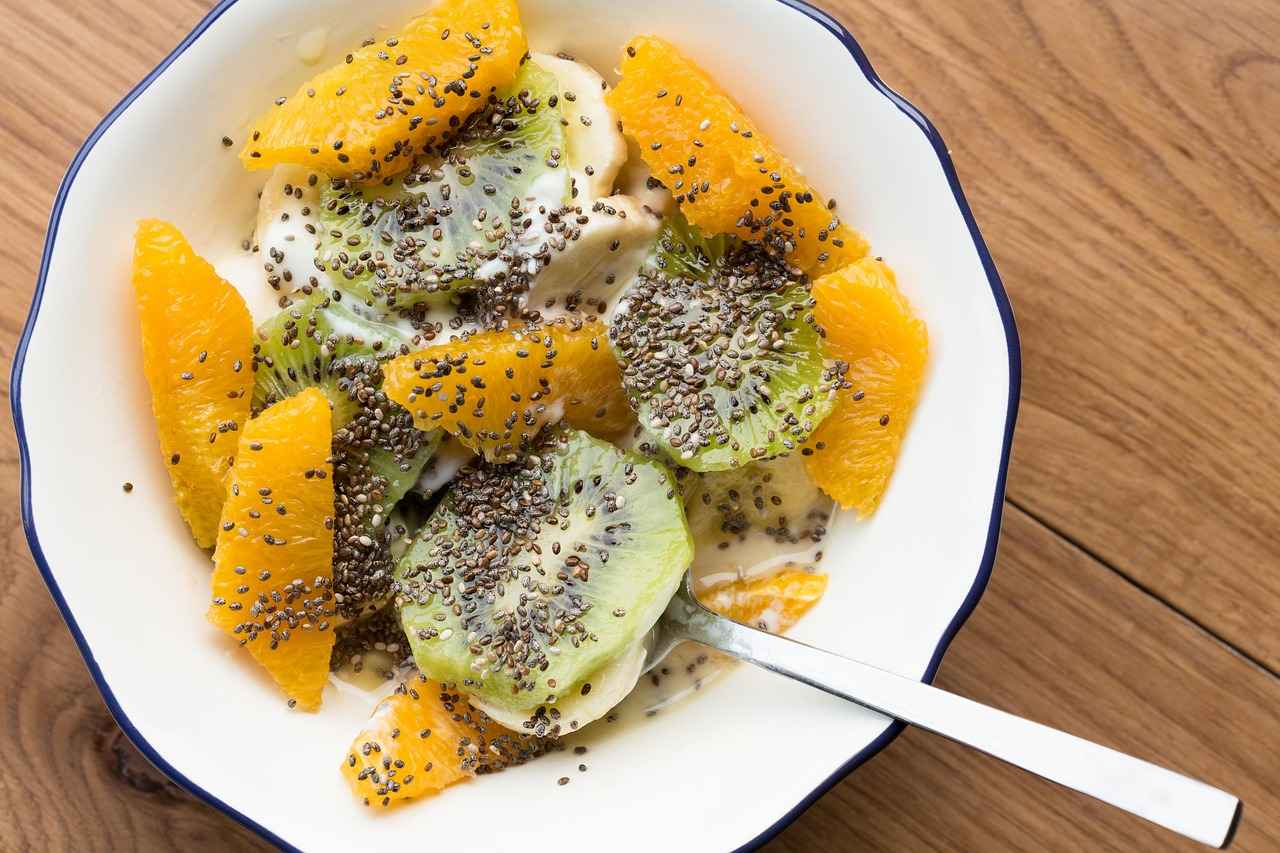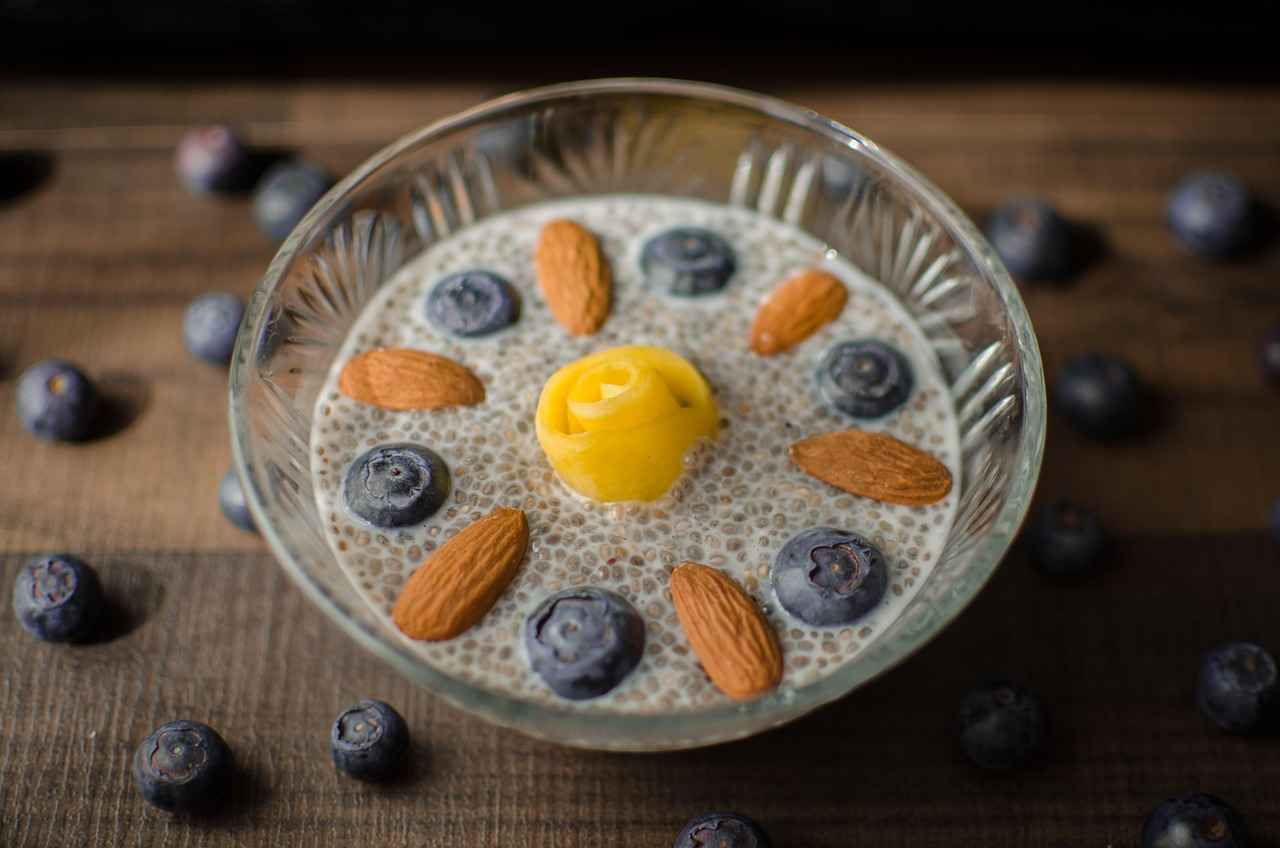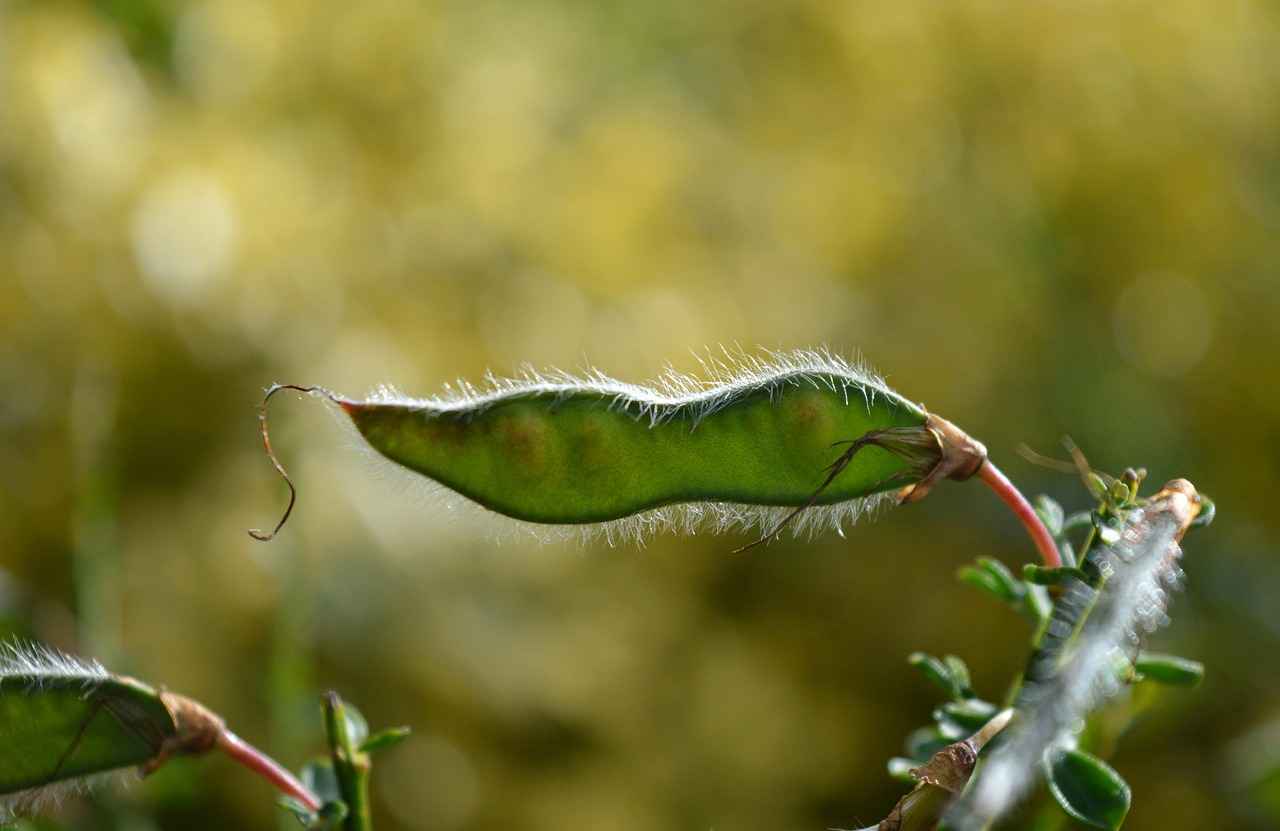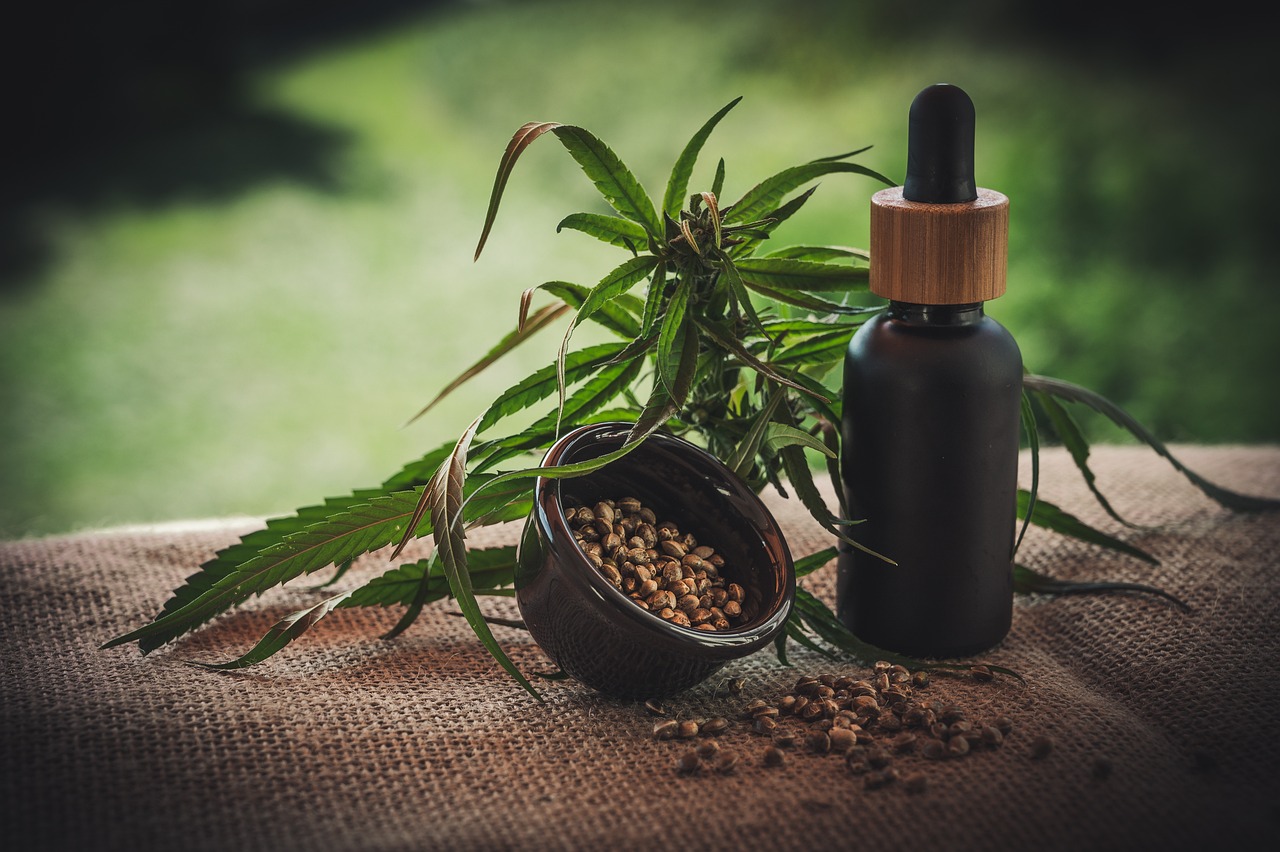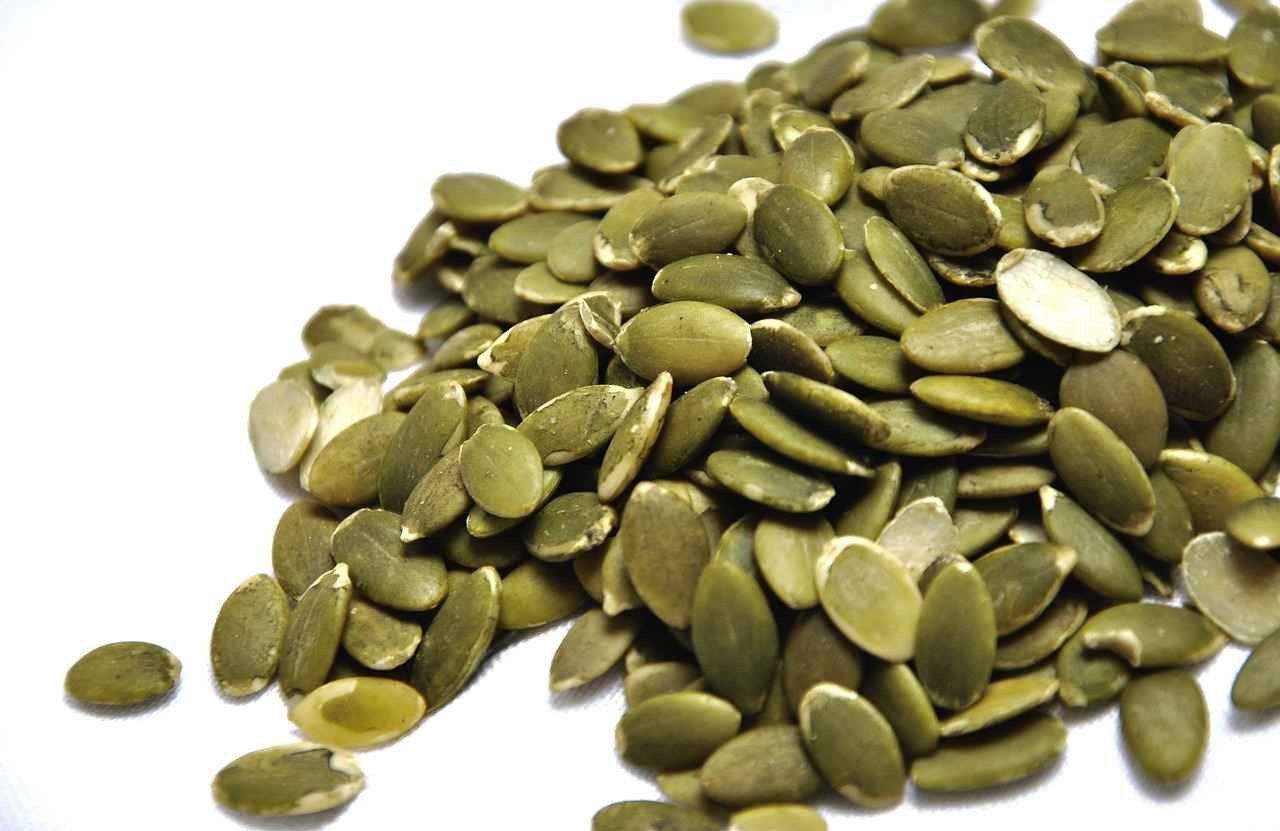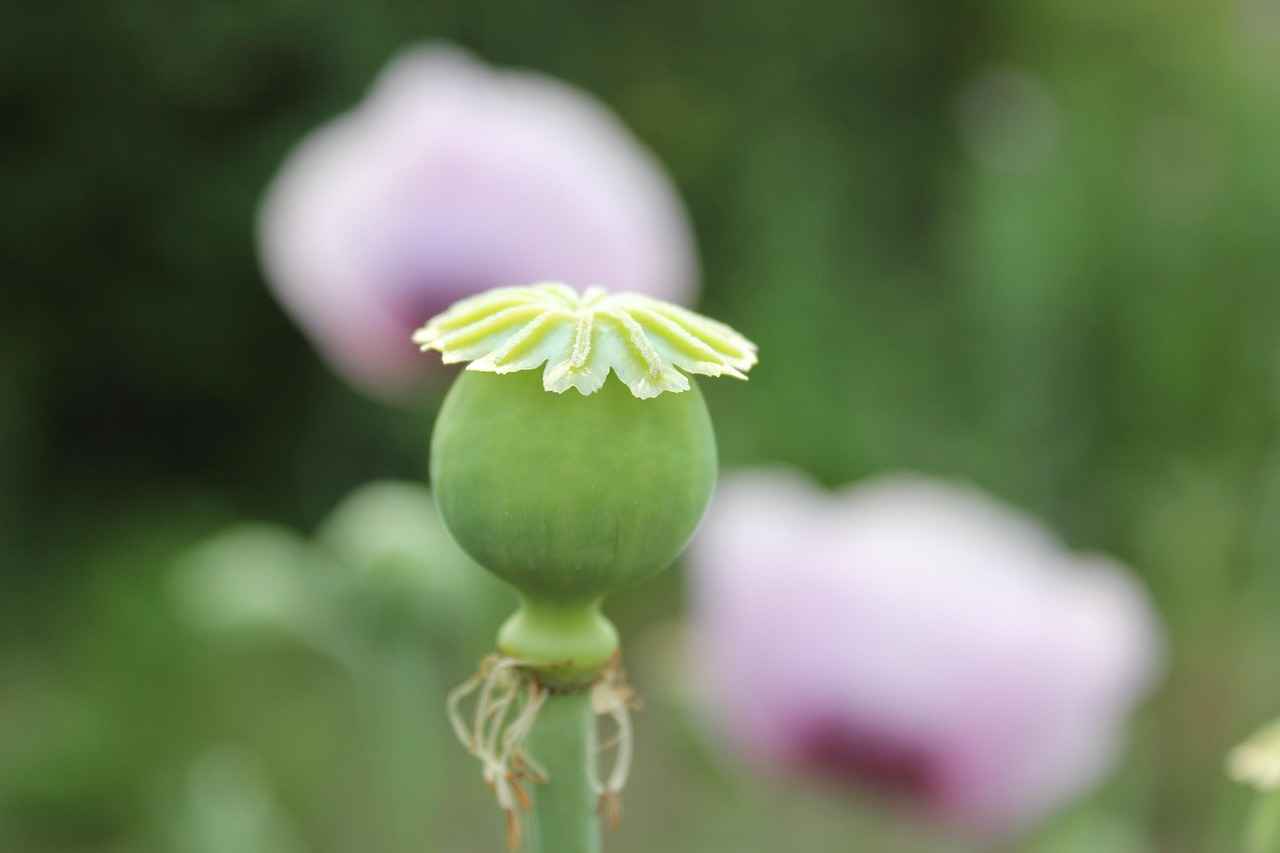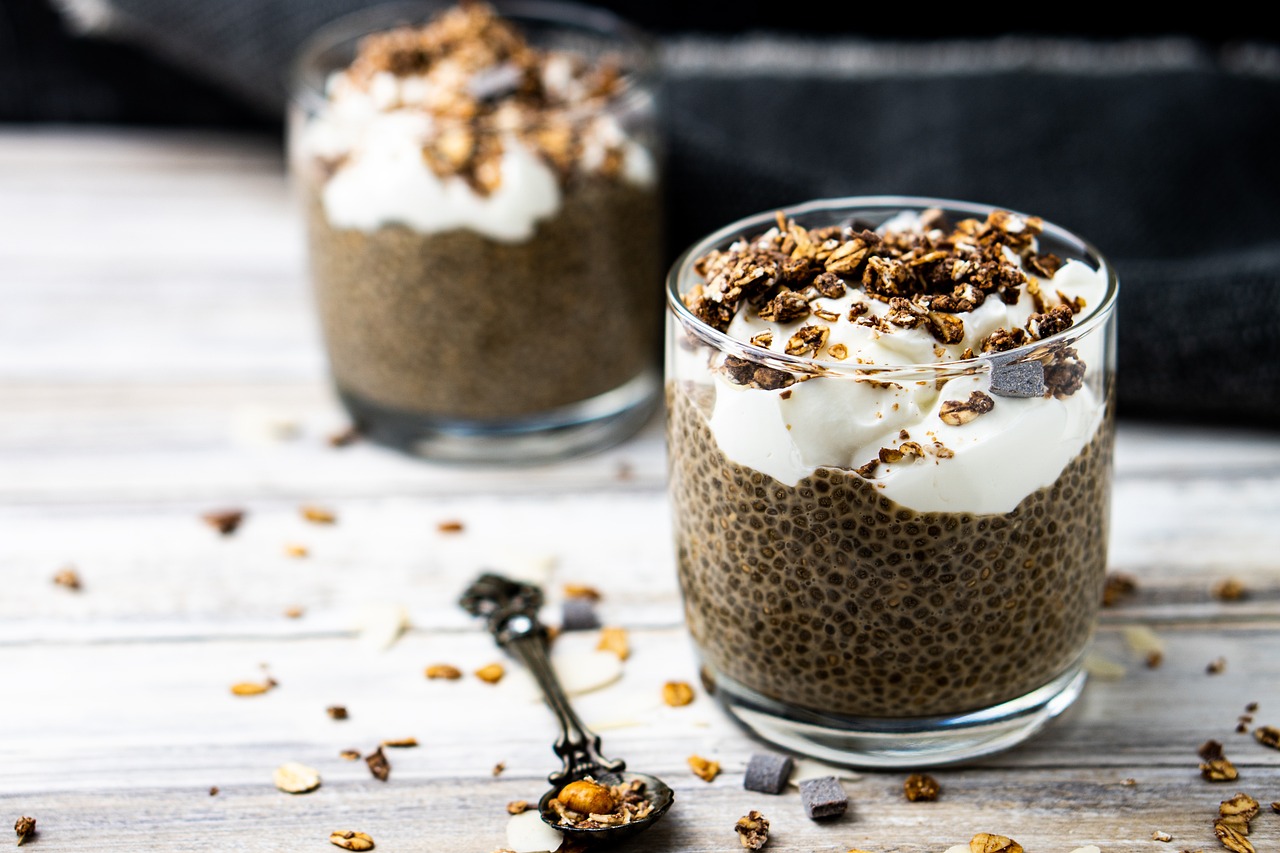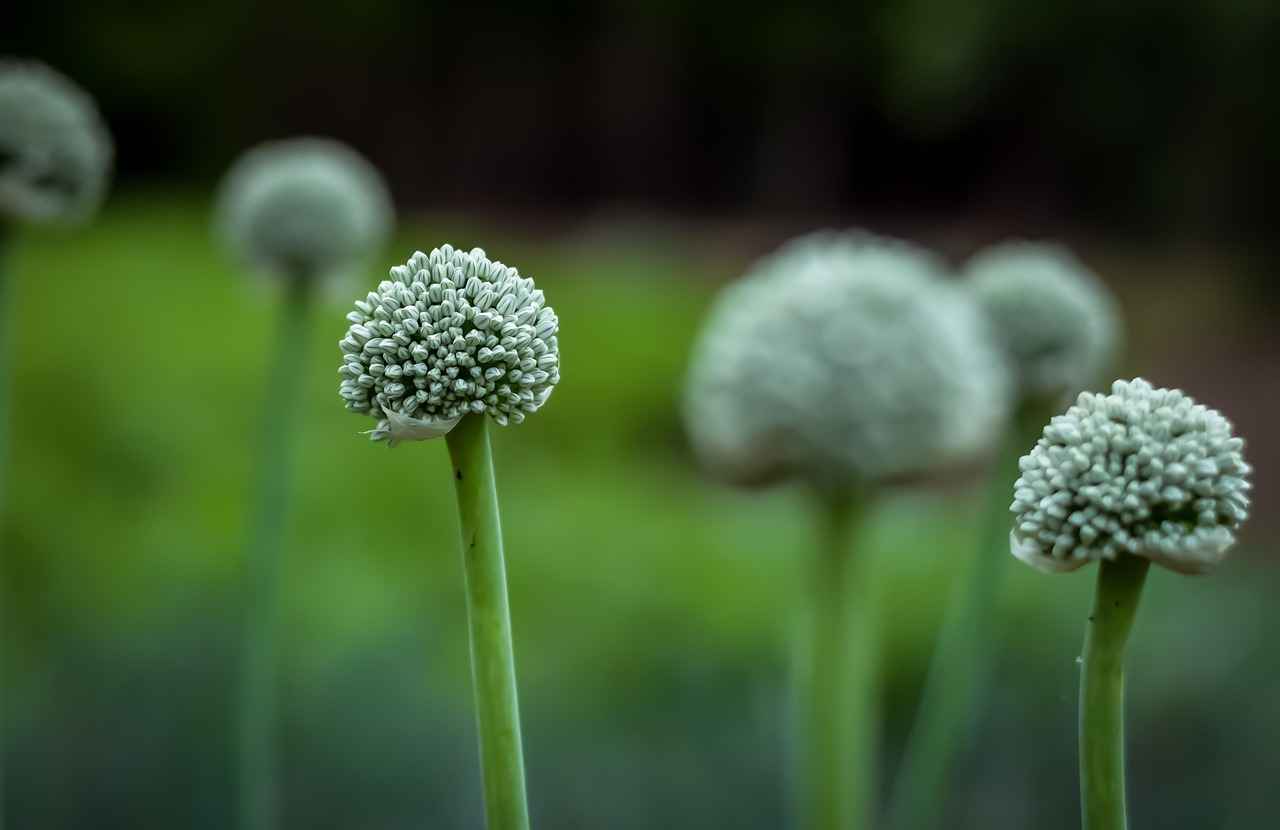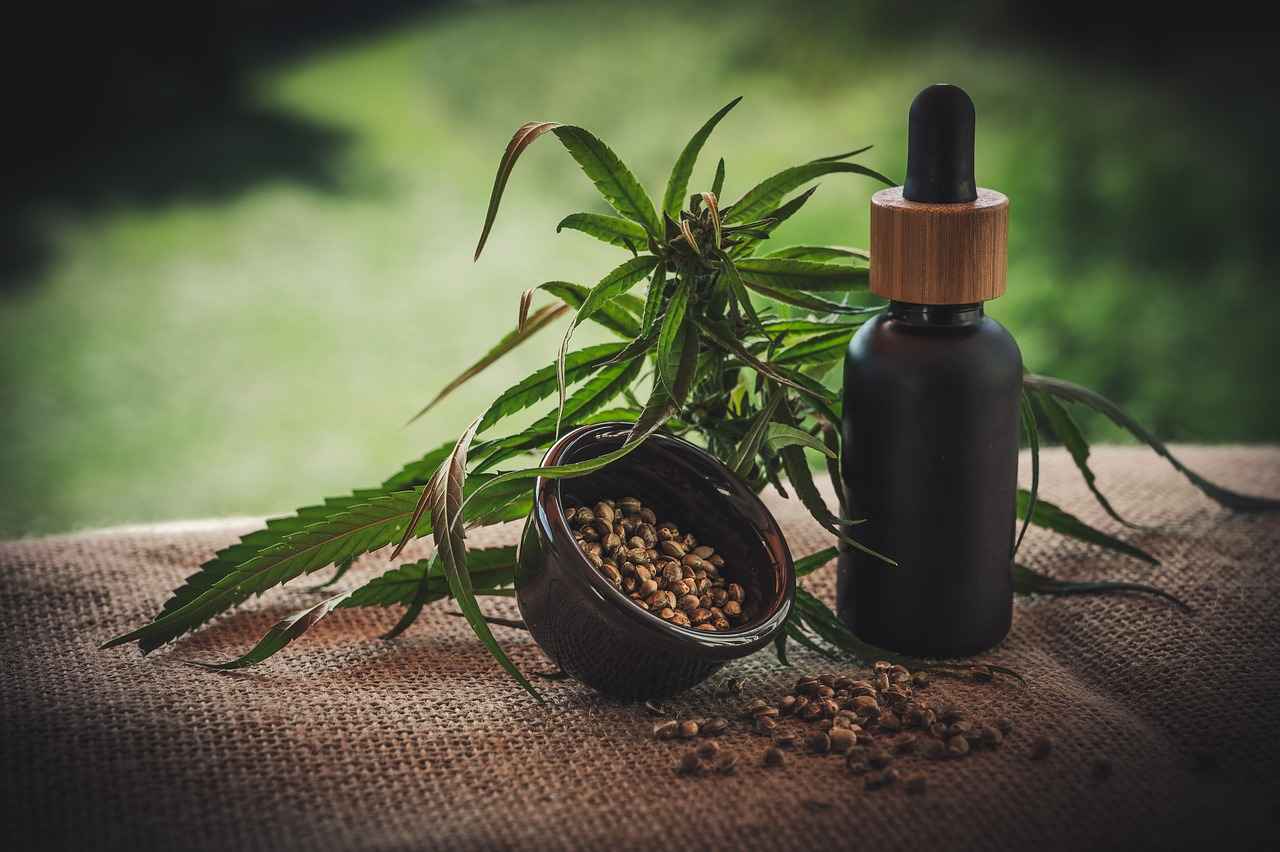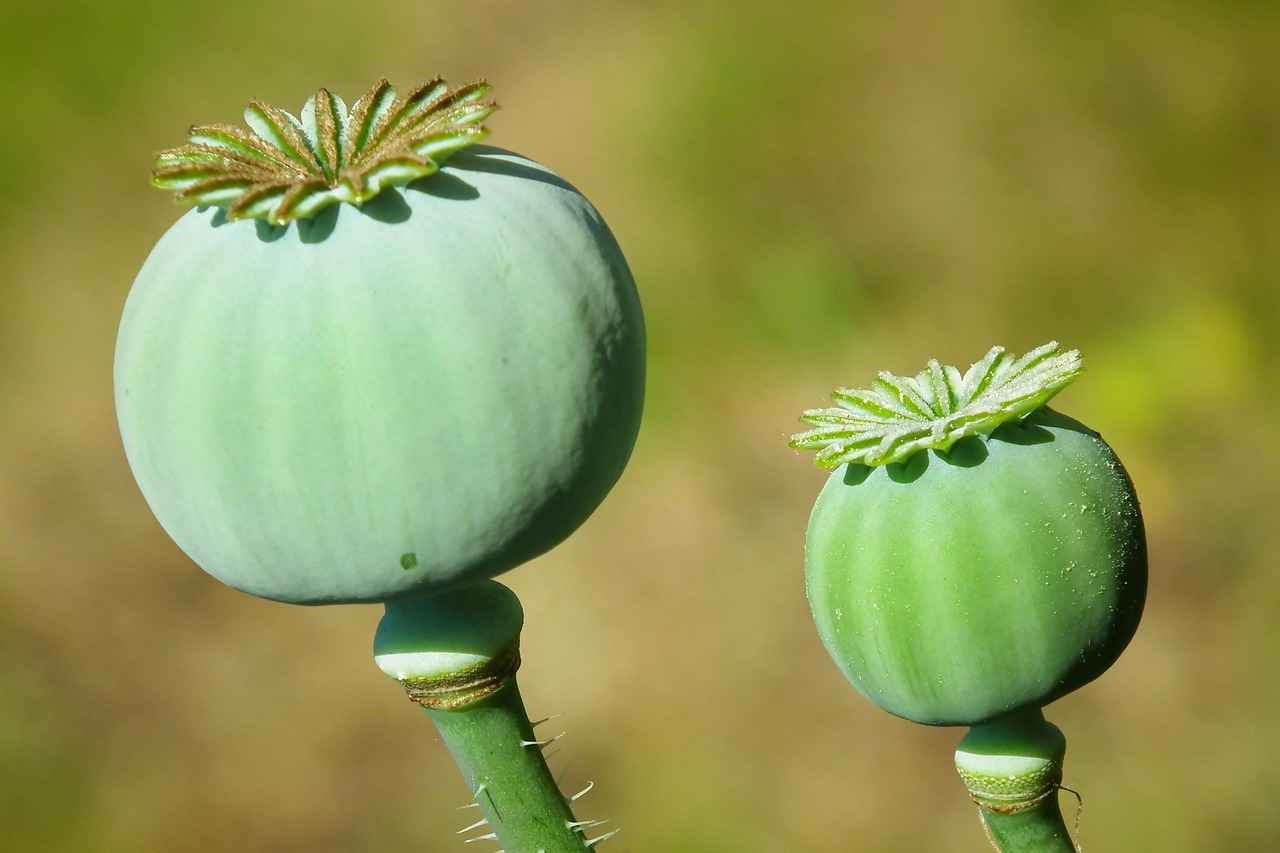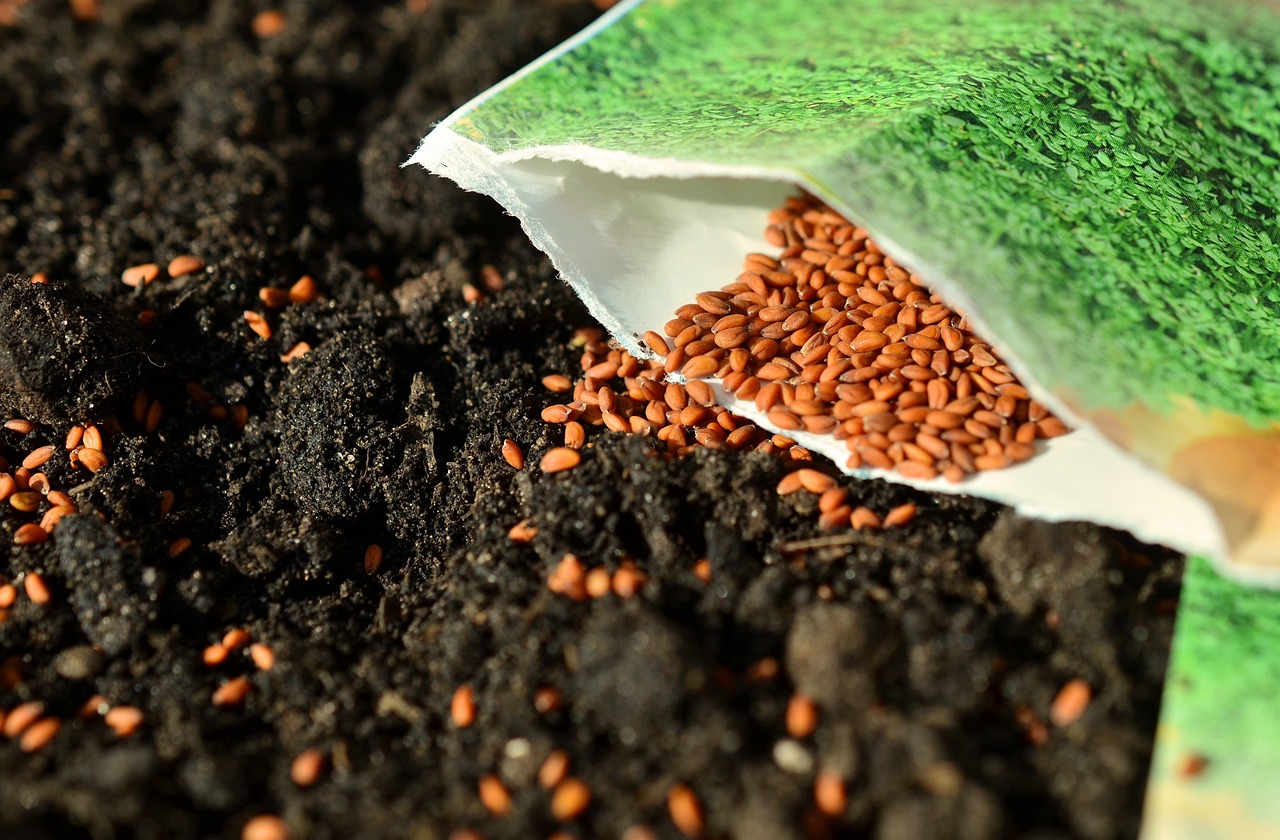This guide provides a comprehensive overview of how to prepare chia seeds, offering practical tips and insights for beginners looking to incorporate these nutritious seeds into their diet. Chia seeds have gained immense popularity in recent years, primarily due to their impressive nutritional profile and versatility in various recipes.
What Are Chia Seeds and Why Are They Popular?
Chia seeds are tiny black seeds derived from the Salvia hispanica plant, native to Central America. Their rising popularity can be attributed to their rich content of omega-3 fatty acids, fiber, protein, and antioxidants. This superfood has become a staple among health enthusiasts and those seeking to enhance their diets.
How to Choose the Right Chia Seeds?
Selecting high-quality chia seeds is crucial. When choosing chia seeds, look for organic, non-GMO options that are free from additives. This ensures you are consuming the best product available, maximizing the health benefits.
How to Prepare Chia Seeds for Consumption?
Preparing chia seeds is simple and can be done in various ways. Here are some effective methods:
- Soaking Chia Seeds: Soaking chia seeds in water or milk allows them to expand and form a gel-like consistency. This process not only enhances their digestibility but also makes them easier to incorporate into meals.
- Blending Chia Seeds: Blending chia seeds into smoothies or other recipes is another effective way to prepare them. This method allows you to consume the seeds without the need for soaking.
Soaking Chia Seeds: The Basics
Soaking chia seeds typically takes about 20 minutes to several hours, depending on your desired consistency. Longer soaking times yield a thicker gel, which can be used in various recipes.
What Liquid Should You Use for Soaking?
You can soak chia seeds in a variety of liquids, including water, almond milk, or coconut milk. Experimenting with different liquids can add flavor and nutritional variety to your meals.
How to Incorporate Chia Seeds into Your Diet?
Chia seeds can be added to a variety of dishes, including:
- Smoothies: Boost the nutritional profile of your smoothies by adding chia seeds. They add texture and can help keep you full longer.
- Oatmeal: Stirring chia seeds into your morning oatmeal can enhance its nutritional value.
- Salads: Sprinkle chia seeds on salads for added crunch and nutrients.
- Baked Goods: Incorporate chia seeds into muffins, bread, or pancakes for a healthy twist.
Chia Seed Pudding: A Delicious Treat
Chia seed pudding is a popular dish that is easy to make. Combine soaked chia seeds with milk and sweeteners to create a nutritious dessert or breakfast option. You can customize it by adding fruits, nuts, or spices.
What Are the Health Benefits of Chia Seeds?
Chia seeds are packed with nutrients that offer numerous health benefits, including:
- Improved Digestion: The high fiber content aids digestion and promotes gut health.
- Heart Health: Omega-3 fatty acids contribute to cardiovascular health.
- Weight Management: Chia seeds can help you feel fuller for longer, aiding in weight control.
Are There Any Risks or Side Effects?
While chia seeds are generally safe for most people, some may experience digestive issues if consumed in excess. It’s important to start with small amounts and gradually increase your intake.
How to Store Chia Seeds Properly?
To maintain their freshness and nutritional value, store chia seeds in a cool, dry place, preferably in an airtight container. Proper storage can extend their shelf life significantly.
Where to Buy Quality Chia Seeds?
Finding high-quality chia seeds is essential for maximizing their benefits. Look for them at health food stores, online retailers, or local grocery stores that offer organic products.
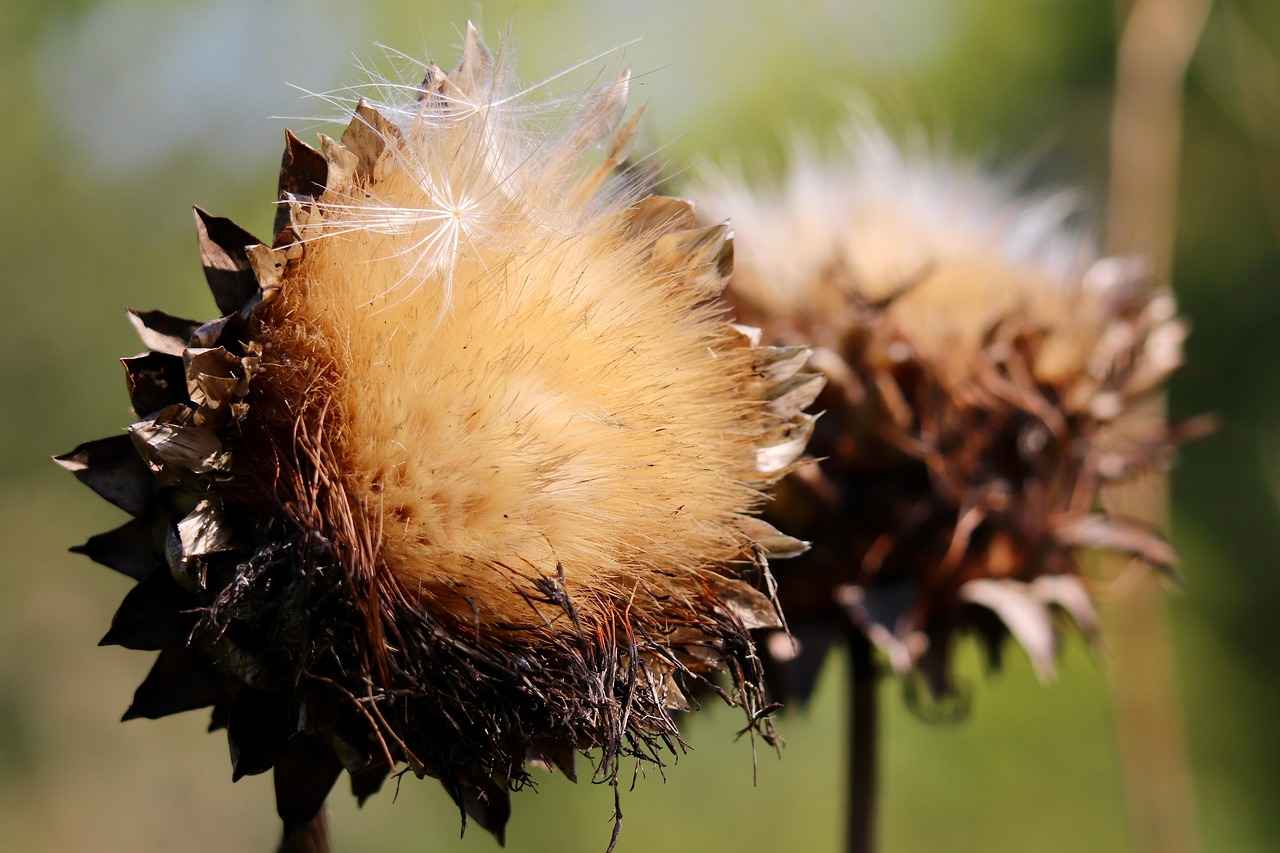
What Are Chia Seeds and Why Are They Popular?
Chia seeds have surged in popularity in recent years, becoming a staple in health-conscious diets around the globe. These tiny seeds, native to the Salvia hispanica plant, are celebrated for their impressive nutritional profile and versatility in various culinary applications. Packed with essential nutrients, chia seeds are often labeled as a superfood, appealing to those looking to enhance their overall well-being.
One of the primary reasons for the rising fame of chia seeds is their high content of omega-3 fatty acids. These healthy fats are crucial for heart health, as they help reduce inflammation and lower cholesterol levels. Additionally, chia seeds are an excellent source of dietary fiber, which aids in digestion and promotes a feeling of fullness, making them a popular choice for those aiming to manage their weight.
Moreover, chia seeds are rich in antioxidants, which combat oxidative stress and may lower the risk of chronic diseases. This combination of nutrients not only contributes to physical health but also supports mental well-being, as omega-3 fatty acids are known to play a role in brain function and mood regulation.
Another factor contributing to the popularity of chia seeds is their versatility. They can be easily incorporated into a variety of dishes, from smoothies and salads to baked goods and puddings. Their ability to absorb liquid and form a gel-like consistency makes them an excellent thickening agent, enhancing the texture of recipes without adding excessive calories.
Furthermore, chia seeds are incredibly easy to prepare. Unlike many other seeds and grains, they do not require extensive cooking or preparation time. Simply soaking them in water or milk for a short period allows them to expand and become digestible, making them a convenient option for busy lifestyles.
For those concerned about dietary restrictions, chia seeds are naturally gluten-free and suitable for vegan and vegetarian diets. This inclusivity further broadens their appeal, allowing a diverse range of individuals to benefit from their nutritional advantages.
In summary, the growing popularity of chia seeds can be attributed to their impressive nutritional benefits, ease of preparation, and versatility in various dishes. As more people become aware of the importance of a balanced diet, chia seeds are likely to remain a favored choice among health enthusiasts.

How to Choose the Right Chia Seeds?
Choosing the right chia seeds is an essential step in reaping the maximum health benefits these tiny superfoods offer. With their rising popularity, the market is flooded with various options, making it crucial to know what to look for when selecting chia seeds. Here are some key factors to consider:
- Organic Certification: Always opt for organic chia seeds. Organic seeds are grown without synthetic pesticides or fertilizers, ensuring a cleaner product that is better for your health and the environment.
- Non-GMO: Look for seeds that are labeled as non-GMO (genetically modified organism). This guarantees that the seeds have not been altered in a laboratory setting, preserving their natural nutritional profile.
- Freshness: Check the packaging for a harvest date or expiration date. Fresh chia seeds have a longer shelf life and retain more nutrients. Seeds that are too old may have reduced health benefits and a rancid taste.
- Packaging: Choose chia seeds that come in opaque or vacuum-sealed packaging. Light and air can degrade the quality of the seeds, so proper packaging helps preserve their freshness.
- Source: Research the brand’s reputation and sourcing practices. High-quality brands often provide transparency about where their seeds are grown and how they are processed.
- Free from Additives: Ensure that the chia seeds you select are free from additives, preservatives, or fillers. Pure seeds offer the best nutritional value.
When browsing for chia seeds, you may come across different varieties, such as black and white chia seeds. Both types are nutritionally similar, but some people prefer the appearance of one over the other. Ultimately, it comes down to personal preference.
Additionally, consider purchasing chia seeds from reputable health food stores, farmers’ markets, or online retailers that specialize in organic products. Always read customer reviews and ratings to gauge the quality of the seeds before making a purchase.
In summary, selecting high-quality chia seeds involves looking for organic, non-GMO options that are free from additives and packaged properly. By paying attention to these details, you can ensure you are consuming the best chia seeds available, maximizing their health benefits and enhancing your overall diet.
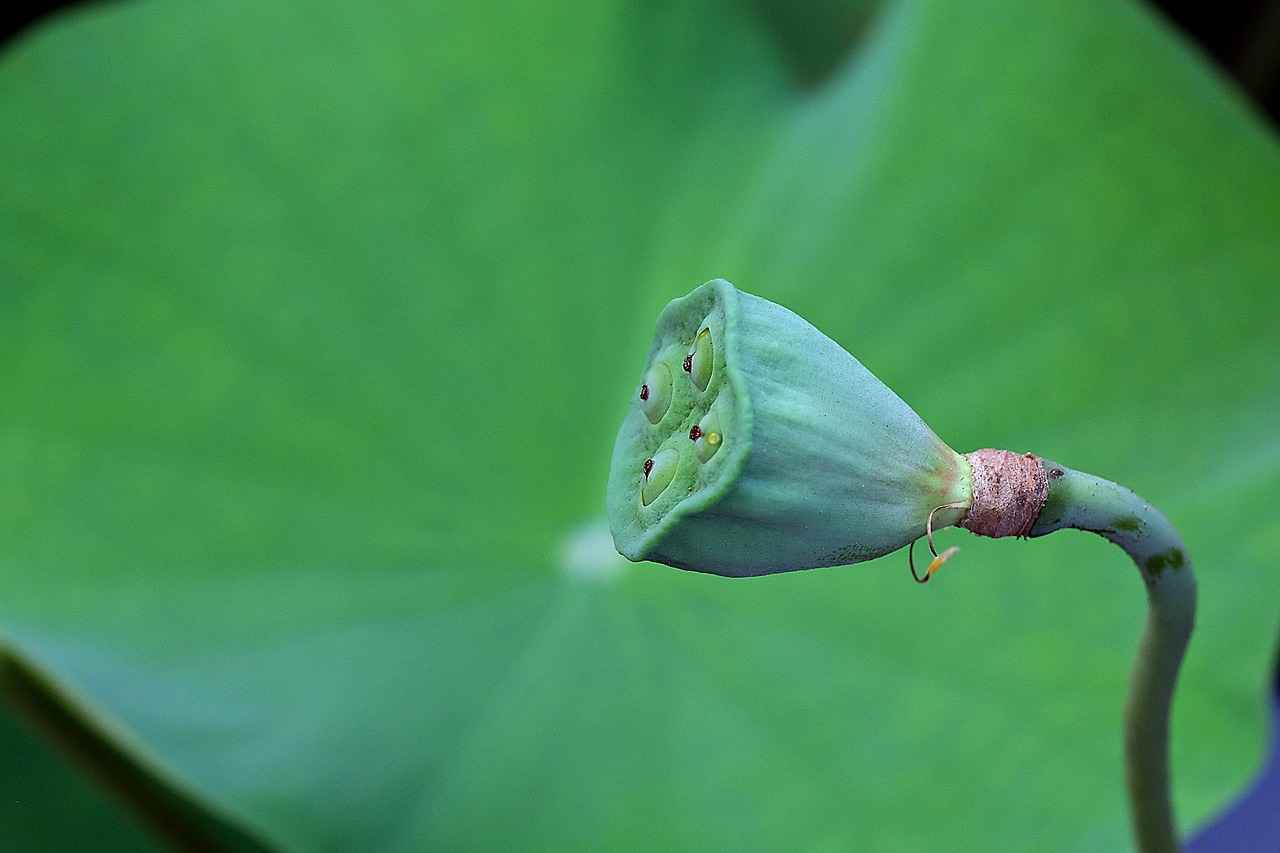
How to Prepare Chia Seeds for Consumption?
Chia seeds are a highly nutritious addition to any diet, known for their versatility and health benefits. When it comes to preparing chia seeds for consumption, there are several methods that can enhance their digestibility and nutritional value. This guide will delve into the various ways to prepare chia seeds, ensuring you can enjoy their full benefits.
Soaking chia seeds is one of the most popular methods of preparation. When chia seeds are soaked in a liquid, they absorb water and expand, forming a gel-like consistency. This process not only makes them easier to digest but also enhances their nutrient absorption.
- How Long Should You Soak Chia Seeds? Generally, chia seeds should be soaked for at least 20 minutes to several hours. The longer they soak, the thicker the gel will become, making them perfect for various recipes.
- What Liquid Is Best for Soaking? You can use a variety of liquids for soaking, including water, almond milk, or coconut milk. Each liquid adds a unique flavor and nutritional profile, so feel free to experiment!
If you’re short on time, blending chia seeds is an excellent option. This method allows you to incorporate chia seeds into smoothies or other recipes without the need for soaking.
- How to Blend Chia Seeds? Simply add the seeds to your blender along with your other smoothie ingredients. This will ensure they are well incorporated, providing a nutrient boost without altering the texture significantly.
Chia seeds can be easily added to a variety of dishes, enhancing their nutritional value. Here are some popular ways to include them in your meals:
- Chia Seed Pudding: Combine soaked chia seeds with milk (dairy or non-dairy) and sweeteners to create a delicious pudding. This can serve as a nutritious breakfast or dessert.
- Boosting Smoothies: Adding chia seeds to your smoothies not only increases their fiber content but also helps keep you feeling full longer, making them ideal for meal replacements.
- Sprinkling on Salads: Sprinkle chia seeds on salads for added crunch and nutrients. They can also be mixed into dressings for an extra health boost.
- Baking with Chia Seeds: Incorporate chia seeds into baked goods like muffins and bread. They add texture and can replace eggs in vegan recipes when mixed with water.
Preparing chia seeds properly not only enhances their taste but also maximizes their health benefits. Rich in omega-3 fatty acids, fiber, and antioxidants, chia seeds support heart health, aid digestion, and help in weight management. Including them in your diet can lead to improved overall health.
While chia seeds are generally safe for most people, consuming them in excess may lead to digestive issues. It is advisable to start with small amounts and gradually increase your intake to avoid discomfort.
To maintain the freshness and nutritional value of chia seeds, store them in a cool, dry place in an airtight container. This will help extend their shelf life and ensure they remain a healthy addition to your meals.
Soaking Chia Seeds: The Basics
Soaking chia seeds is a fundamental step in preparing these tiny superfoods for consumption. When you soak chia seeds in water or milk, they absorb the liquid and expand, creating a gel-like consistency. This transformation not only enhances their digestibility but also makes it easier to incorporate them into various meals and recipes.
Soaking chia seeds serves multiple purposes. Firstly, it activates the seeds, allowing them to release their nutrients more effectively. The gel formed during soaking is rich in soluble fiber, which can aid in digestion and promote a feeling of fullness. This makes soaked chia seeds a fantastic addition to a weight management plan.
Generally, chia seeds should be soaked for a minimum of 20 minutes to several hours, depending on your desired texture. For a thicker gel, you can allow them to soak overnight. This extended soaking time not only improves the consistency but also maximizes their nutritional benefits.
You have a variety of options when it comes to soaking liquids. While water is the most common choice, you can also use almond milk, coconut milk, or even fruit juices for added flavor. Experimenting with different liquids can enhance the taste of your dishes, making chia seeds a versatile ingredient in your kitchen.
- Measure the desired amount of chia seeds. A common ratio is 1 part chia seeds to 4 parts liquid.
- Combine the chia seeds and liquid in a bowl or jar.
- Stir the mixture well to prevent clumping.
- Let the mixture sit for the appropriate soaking time.
- Stir again before using to ensure an even consistency.
Once your chia seeds are soaked, the possibilities are endless. You can add them to smoothies, oatmeal, or yogurt for a nutritious boost. They can also be used to create delicious chia seed pudding by mixing soaked seeds with your choice of milk and sweeteners. This makes for a perfect breakfast or a healthy dessert option.
Yes, soaking chia seeds in advance is a convenient option. You can prepare a larger batch and store it in the refrigerator for up to 5 days. This way, you always have a nutritious ingredient ready to add to your meals without the need for daily preparation.
Incorporating soaked chia seeds into your diet is a simple yet effective way to enhance your nutritional intake. By understanding the soaking process, you can maximize the benefits of these tiny seeds and enjoy their versatility in a variety of dishes. Whether you’re looking to improve your digestion, boost your energy levels, or simply enjoy a delicious treat, soaked chia seeds are an excellent choice.
How Long Should You Soak Chia Seeds?
When it comes to incorporating chia seeds into your diet, one of the most important steps is understanding how to prepare them properly. This is especially true for soaking chia seeds, which can significantly affect their texture and digestibility. In this section, we will explore the optimal soaking times for chia seeds and how they can influence your culinary creations.
Typically, chia seeds should be soaked for a minimum of 20 minutes to several hours, depending on your desired consistency. The soaking process allows the seeds to absorb liquid and expand, forming a gel-like texture that can enhance various dishes.
- Short Soaking Time: If you’re in a hurry, soaking chia seeds for at least 20 minutes will yield a slightly thicker consistency that is still enjoyable. This is perfect for quick recipes like smoothies or instant puddings.
- Medium Soaking Time: Soaking for 1 to 2 hours results in a more substantial gel, making it ideal for chia seed puddings or as a topping for yogurt and oatmeal.
- Long Soaking Time: For those who prefer a very thick gel, soaking chia seeds overnight in the refrigerator is the best option. This method ensures that the seeds fully absorb the liquid, creating a creamy and satisfying texture.
It’s essential to note that the soaking liquid can also influence the final flavor and nutritional profile of your chia seeds. You can use:
- Water
- Almond milk
- Coconut milk
- Fruit juices
Experimenting with different liquids can add unique flavors to your dishes, making chia seeds a versatile ingredient in your kitchen.
Soaking chia seeds not only enhances their texture but also improves their digestibility. When soaked, the seeds swell and create a gel that can help with nutrient absorption in the digestive tract. This process makes it easier for your body to utilize the beneficial nutrients found in chia seeds, such as omega-3 fatty acids, fiber, and antioxidants.
Furthermore, soaking chia seeds can help prevent potential digestive discomfort that some individuals may experience when consuming them dry. By allowing the seeds to soak, you are essentially pre-digesting them, which can lead to a more enjoyable eating experience.
Once your chia seeds are soaked, there are countless ways to incorporate them into your meals:
- Add them to smoothies for a nutrient boost and thick texture.
- Use them as a base for chia seed pudding, mixing with your choice of sweeteners and flavors.
- Incorporate them into baked goods like muffins or bread for added fiber.
- Sprinkle them on salads or yogurt for a crunchy topping.
In summary, soaking chia seeds for at least 20 minutes to several hours is crucial for achieving the desired consistency and enhancing their health benefits. Whether you’re making a quick smoothie or preparing a delicious chia pudding, understanding the soaking process will elevate your culinary experience.
What Liquid Should You Use for Soaking?
When it comes to soaking chia seeds, the choice of liquid plays a crucial role in both flavor and texture. The most common options include water, almond milk, coconut milk, and many others. Each liquid brings its own unique properties, allowing you to tailor your chia seed experience to your taste preferences and nutritional needs.
Using water is the simplest method. It allows the chia seeds to expand and create their characteristic gel-like consistency without altering the flavor. This is perfect for those who prefer a neutral taste or want to add the seeds to other flavored dishes.
Almond milk is a popular choice for those looking to add a nutty flavor to their chia seeds. It is also dairy-free and often enriched with vitamins and minerals, making it a nutritious option. Soaking chia seeds in almond milk can create a creamy texture that is ideal for smoothies or puddings.
Coconut milk, on the other hand, offers a rich and tropical flavor. This liquid is high in healthy fats and can enhance the overall taste profile of your chia seed dishes. Whether you’re making a chia seed pudding or adding them to a smoothie, coconut milk can provide a delightful twist.
For those who enjoy experimenting, consider using other liquids such as oat milk, soy milk, or even fruit juices. Each option can introduce new flavors and nutritional benefits. For instance, using orange juice can add a refreshing citrus kick, while matcha tea can infuse your chia seeds with antioxidants and a unique taste.
When soaking chia seeds, the general rule of thumb is to use a ratio of 1:4 (one part chia seeds to four parts liquid). This ensures that the seeds have enough liquid to absorb and expand properly. Depending on your desired consistency, you can adjust the ratio slightly. For a thicker gel, use less liquid; for a thinner mixture, add more.
It’s important to allow the chia seeds to soak for at least 20 minutes, but for best results, soaking them for several hours or overnight is recommended. This not only improves digestibility but also enhances the seeds’ nutrient absorption.
In summary, the liquid you choose for soaking chia seeds can significantly impact their flavor, texture, and nutritional value. By experimenting with different options, you can find the perfect combination that suits your palate and dietary preferences. So go ahead, get creative, and enjoy the myriad of possibilities that chia seeds have to offer!
Blending Chia Seeds: A Quick Option
Blending chia seeds into your favorite smoothies or recipes is not only a quick and convenient method but also a fantastic way to ensure you are consuming these nutritious seeds without the need for soaking. This technique allows you to incorporate chia seeds seamlessly into your meals while reaping their numerous health benefits.
When you blend chia seeds, they become part of the smoothie’s texture, providing a nutritional boost without altering the flavor significantly. This is particularly beneficial for those who may not enjoy the gel-like consistency that soaked chia seeds develop. Instead, blending creates a smooth, creamy texture that can enhance the overall experience of your drink or dish.
To effectively blend chia seeds, you can follow these simple steps:
- Select Your Ingredients: Choose your favorite fruits, vegetables, and liquids. Common choices include bananas, spinach, almond milk, or yogurt.
- Add Chia Seeds: For a standard smoothie, add about 1 to 2 tablespoons of chia seeds. This amount will provide a significant nutritional punch without overwhelming the smoothie.
- Blend Thoroughly: Combine all ingredients in a blender and blend until smooth. Ensure that the chia seeds are well incorporated into the mixture.
- Let it Sit: For optimal texture, allow the blended smoothie to sit for about 5-10 minutes. This will give the chia seeds a chance to absorb some liquid and expand slightly, enhancing the smoothie’s consistency.
Blending chia seeds is particularly advantageous for those with busy lifestyles. It allows you to prepare a nutritious meal or snack in just a few minutes. You can also experiment with different flavor combinations, making your smoothies unique and tailored to your taste preferences. For instance, adding a scoop of protein powder or a handful of nuts can create a more filling meal replacement.
Moreover, this method retains the health benefits of chia seeds. They are an excellent source of omega-3 fatty acids, which are essential for heart health, and they provide a significant amount of fiber, which aids in digestion and promotes a feeling of fullness. Additionally, chia seeds contain antioxidants that help combat oxidative stress in the body.
For a delightful variation, consider making a chia seed smoothie bowl. Simply blend your ingredients as you would for a regular smoothie but use a little less liquid to achieve a thicker consistency. Pour the mixture into a bowl and top it with your favorite fruits, nuts, and seeds for added texture and flavor.
In summary, blending chia seeds into your smoothies is a quick and effective way to enjoy their health benefits without the need for prior soaking. This method not only enhances the nutritional profile of your meals but also allows for creative expression in the kitchen. Embrace this simple technique and explore the endless possibilities that chia seeds can bring to your diet.
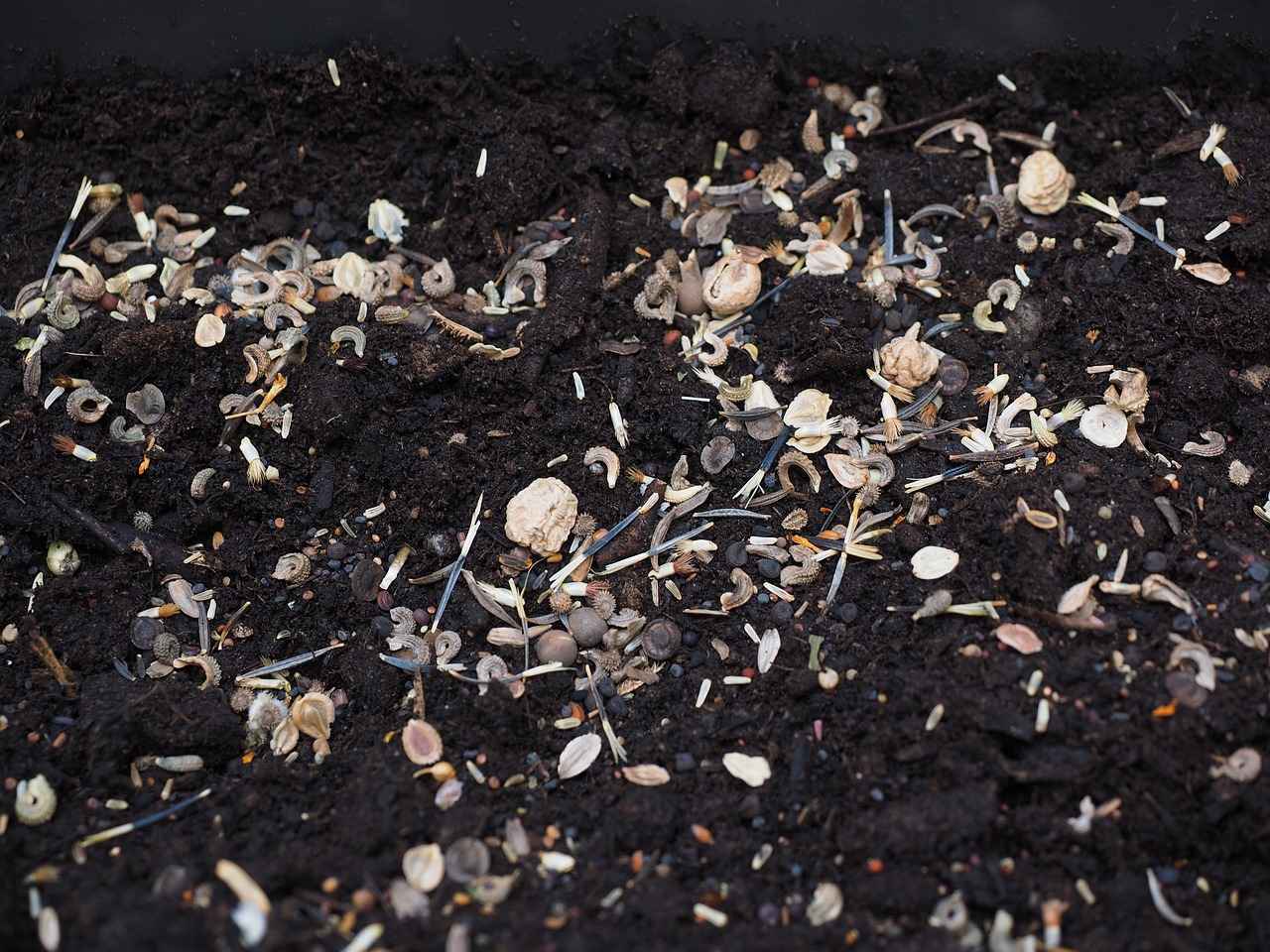
How to Incorporate Chia Seeds into Your Diet?
Chia seeds are a versatile and nutritious addition to your diet, offering a range of health benefits and culinary possibilities. As you explore how to incorporate these tiny powerhouses into your meals, you’ll discover that their mild flavor allows them to blend seamlessly into various dishes. Here are some creative and delicious ways to include chia seeds in your daily meals.
One of the easiest ways to enjoy chia seeds is by adding them to smoothies. Not only do they enhance the nutritional value, but they also add a delightful texture. Simply blend a tablespoon of soaked chia seeds into your favorite smoothie recipe. For added benefits, consider the following:
- Boost Fiber Intake: Chia seeds are rich in fiber, which can help keep you feeling full longer.
- Omega-3 Fatty Acids: These seeds are an excellent source of plant-based omega-3s, supporting heart health.
Chia seed pudding is not only a popular breakfast option but also a delicious dessert. To make it, mix soaked chia seeds with your choice of milk (dairy or plant-based) and sweeteners like honey or maple syrup. Allow it to sit in the refrigerator for a few hours or overnight, and you’ll have a creamy, nutritious treat. Here are some variations:
- Chocolate Chia Pudding: Add cocoa powder for a rich chocolate flavor.
- Fruit-Infused Pudding: Mix in pureed fruits for added sweetness and flavor.
Chia seeds can also enhance your morning oatmeal. Stir in a tablespoon of chia seeds while cooking your oats, or sprinkle them on top before serving. This not only increases the nutrient content but also adds a satisfying crunch. Consider these tips:
- Flavor Boost: Add cinnamon, fruits, or nuts to your oatmeal for extra flavor.
- Texture Variation: Soaking the chia seeds beforehand can create a gel-like consistency that complements the creaminess of oatmeal.
Chia seeds can be an excellent addition to salads, providing a nice crunch and nutritional punch. You can sprinkle them on top of your salad or mix them into the dressing. Here’s how:
- Chia Seed Dressing: Blend chia seeds with olive oil, vinegar, and herbs for a nutritious dressing.
- Salad Toppers: Combine chia seeds with sunflower seeds and nuts for a crunchy topping.
If you enjoy baking, chia seeds can be incorporated into various baked goods. They can be added to muffins, breads, and pancakes. Here’s how they can enhance your baking:
- Egg Substitute: Mix one tablespoon of chia seeds with three tablespoons of water to create a gel that can replace one egg in recipes.
- Nutritious Boost: Incorporating chia seeds into your batter increases fiber and protein content.
In conclusion, incorporating chia seeds into your diet is easy and can significantly enhance the nutritional profile of your meals. From smoothies and puddings to salads and baked goods, these tiny seeds can be used in countless ways. Experiment with different recipes and find your favorite methods to enjoy the benefits of chia seeds.
Chia Seed Pudding: A Delicious Treat
Chia seed pudding has become a beloved dish among health enthusiasts and foodies alike. This delightful treat is not only easy to prepare but also packed with nutrients, making it an ideal option for breakfast or dessert. The combination of soaked chia seeds with milk and sweeteners creates a creamy, satisfying dish that can be customized to suit various tastes and dietary preferences.
Chia seeds are tiny black or white seeds derived from the Salvia hispanica plant, which is native to Mexico. These seeds are known for their nutritional density, containing high levels of omega-3 fatty acids, protein, fiber, and essential minerals. When soaked in liquid, chia seeds absorb the moisture and expand, forming a gel-like consistency that serves as the base for chia seed pudding.
Making chia seed pudding is a straightforward process. Here’s a simple recipe to get you started:
- Ingredients:
- 1/4 cup chia seeds
- 1 cup milk (dairy or plant-based)
- 1-2 tablespoons sweetener (honey, maple syrup, or agave syrup)
- 1/2 teaspoon vanilla extract (optional)
- Fruits, nuts, or spices for toppings
Instructions:1. In a mixing bowl, combine chia seeds, milk, sweetener, and vanilla extract.2. Stir well to ensure there are no clumps.3. Cover the bowl and refrigerate for at least 2 hours or overnight.4. Once the pudding has thickened, stir again and add your favorite toppings before serving.
The beauty of chia seed pudding lies in its versatility. You can experiment with different flavors and ingredients to create your perfect pudding. Here are some ideas:
- Chocolate Chia Seed Pudding: Add cocoa powder or melted dark chocolate for a rich flavor.
- Fruit-Infused Pudding: Blend in fruits like bananas, strawberries, or mangoes for natural sweetness.
- Nut Butter Delight: Stir in almond or peanut butter for a creamy texture and added protein.
Chia seed pudding is not just delicious; it also offers numerous health benefits. The high fiber content helps promote digestive health and keeps you feeling full longer, making it a great option for weight management. Additionally, the omega-3 fatty acids found in chia seeds support heart health and reduce inflammation.
Absolutely! Chia seed pudding is perfect for meal prep. You can prepare several servings at once and store them in the refrigerator for up to a week. This makes it an ideal grab-and-go breakfast or snack option for busy individuals.
In conclusion, chia seed pudding is a delicious and nutritious treat that can easily fit into any diet. With its simple preparation and endless variations, it’s no wonder that this dish has gained such popularity. Whether you enjoy it for breakfast or as a dessert, chia seed pudding is a fantastic way to incorporate the health benefits of chia seeds into your daily routine.
Adding Chia Seeds to Smoothies
Adding chia seeds to smoothies is a fantastic way to enhance both the nutritional value and the texture of your drink. These tiny seeds are packed with essential nutrients, making them a popular choice among health enthusiasts. In this section, we will explore the benefits of incorporating chia seeds into your smoothies, the best practices for preparation, and some delicious recipe ideas to get you started.
- Rich in Nutrients: Chia seeds are an excellent source of omega-3 fatty acids, fiber, protein, and antioxidants. These nutrients contribute to overall health and wellbeing.
- Increased Satiety: The high fiber content in chia seeds helps you feel fuller for a longer time, making them ideal for meal replacements or snacks.
- Texture and Consistency: When blended, chia seeds add a delightful texture to smoothies, creating a creamy and satisfying drink.
- Versatility: Chia seeds can easily be incorporated into various smoothie recipes, allowing for endless flavor combinations.
To maximize the benefits of chia seeds in your smoothies, consider the following preparation methods:
Soaking chia seeds before adding them to your smoothie can enhance their digestibility. Here’s how to do it:
- Combine 1 part chia seeds with 4 parts liquid (water, almond milk, or coconut milk).
- Let the mixture sit for at least 20 minutes or until a gel-like consistency forms.
- Add the soaked chia seeds to your smoothie for a creamy texture.
If you’re short on time, you can also blend chia seeds directly into your smoothie. Here’s how:
- Add 1-2 tablespoons of chia seeds directly into your blender with the other ingredients.
- Blend until smooth. The seeds will break down and integrate into the mixture.
Here are a few simple and nutritious smoothie recipes that feature chia seeds:
- Green Power Smoothie: Blend spinach, banana, almond milk, and 1 tablespoon of soaked chia seeds for a refreshing green boost.
- Berries and Cream Smoothie: Combine mixed berries, yogurt, honey, and 1 tablespoon of chia seeds for a delicious treat.
- Chocolate Chia Smoothie: Blend banana, cocoa powder, almond milk, and 1 tablespoon of chia seeds for a chocolatey indulgence.
- Start Small: If you’re new to chia seeds, start with a small amount (1 teaspoon) and gradually increase as you become accustomed to their texture.
- Experiment with Flavors: Chia seeds have a mild flavor, making them perfect for pairing with various fruits and liquids. Don’t hesitate to try different combinations!
- Storage: Keep your chia seeds in a cool, dry place to maintain their freshness and nutritional benefits.
Incorporating chia seeds into your smoothies not only boosts their nutritional profile but also provides a satisfying texture. With these tips and recipes, you can easily enjoy the benefits of chia seeds while indulging in delicious and healthy smoothies.
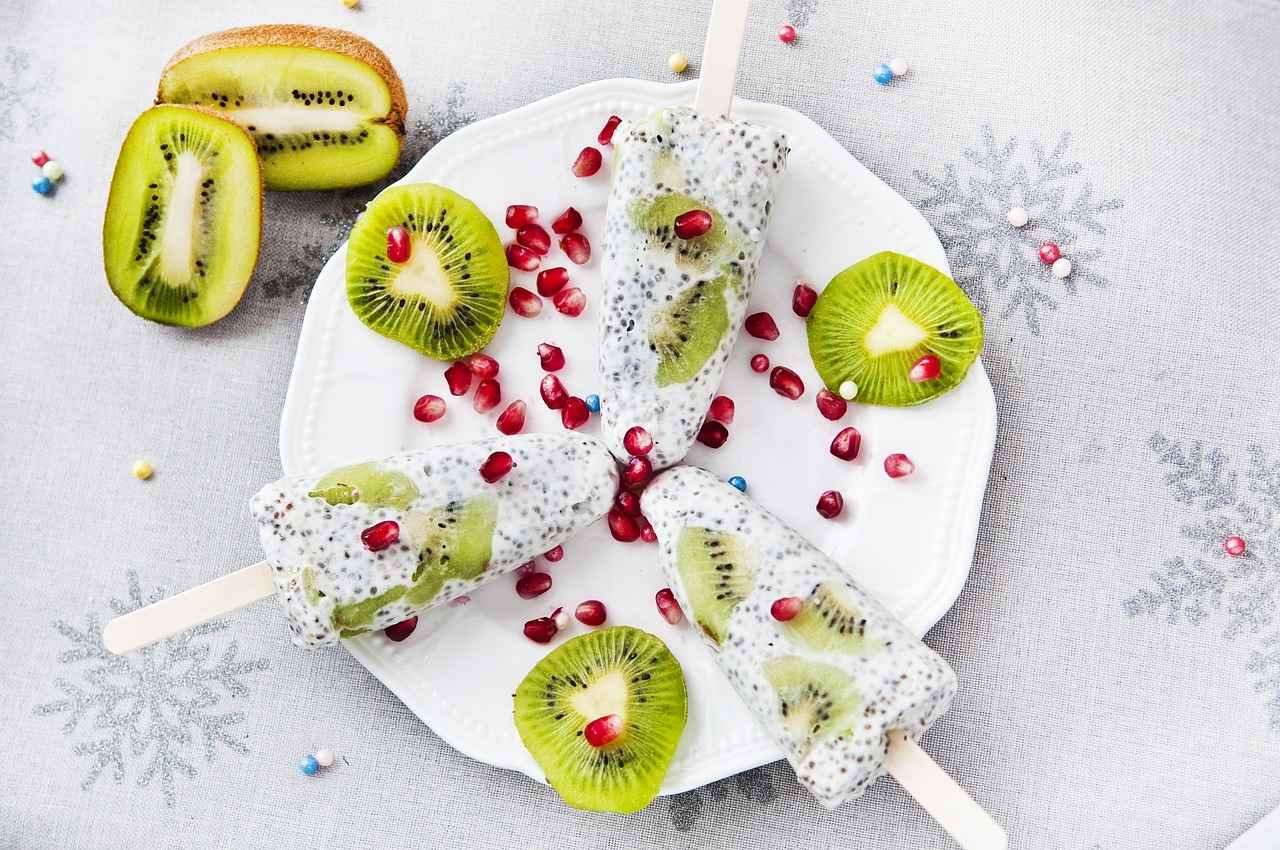
What Are the Health Benefits of Chia Seeds?
Chia seeds have emerged as a popular superfood, and for good reason. These tiny seeds are not only versatile but also packed with an impressive array of nutrients that contribute to overall health. In this section, we will explore the various health benefits associated with chia seeds, supported by scientific findings.
One of the most notable benefits of chia seeds is their ability to enhance digestive health. Rich in dietary fiber, chia seeds can help regulate bowel movements and prevent constipation. When soaked in liquid, chia seeds expand and form a gel-like substance, which aids in digestion by slowing down the absorption of food and promoting a feeling of fullness. This can be particularly beneficial for those looking to manage their weight.
Chia seeds are an excellent source of omega-3 fatty acids, which are essential for maintaining heart health. These fatty acids help to lower cholesterol levels, reduce inflammation, and decrease the risk of heart disease. Several studies have shown that regular consumption of chia seeds can lead to improved cardiovascular health, making them a great addition to a heart-healthy diet.
Incorporating chia seeds into your diet may also assist with weight management. Due to their high fiber content, chia seeds can absorb large amounts of water, expanding in your stomach and promoting a sense of fullness. This can help reduce overall calorie intake. Additionally, the protein found in chia seeds can help curb cravings, making it easier to stick to a healthy eating plan.
Chia seeds are also a good source of several nutrients important for bone health, including calcium, phosphorus, and magnesium. These minerals play a crucial role in maintaining bone density and strength. Regular consumption of chia seeds can contribute to better bone health, making them a valuable addition to the diets of individuals concerned about osteoporosis or other bone-related issues.
Another remarkable benefit of chia seeds is their high antioxidant content. Antioxidants help combat oxidative stress and reduce inflammation in the body. By neutralizing free radicals, chia seeds can contribute to better overall health and may lower the risk of chronic diseases.
Chia seeds may also play a role in regulating blood sugar levels. The soluble fiber in chia seeds can slow the absorption of sugar in the bloodstream, which can be beneficial for individuals with diabetes or those at risk of developing the condition. Incorporating chia seeds into meals can help maintain stable blood sugar levels and prevent spikes.
- Add chia seeds to smoothies for a nutrient boost.
- Mix them into yogurt or oatmeal for added texture and health benefits.
- Use chia seeds as an egg substitute in baking by mixing with water.
- Make chia seed pudding by soaking them in milk or a milk alternative.
In summary, chia seeds offer a multitude of health benefits, from improved digestion and heart health to weight management and bone strength. Their versatility makes them easy to incorporate into various meals, allowing you to enjoy their nutritional advantages effortlessly.
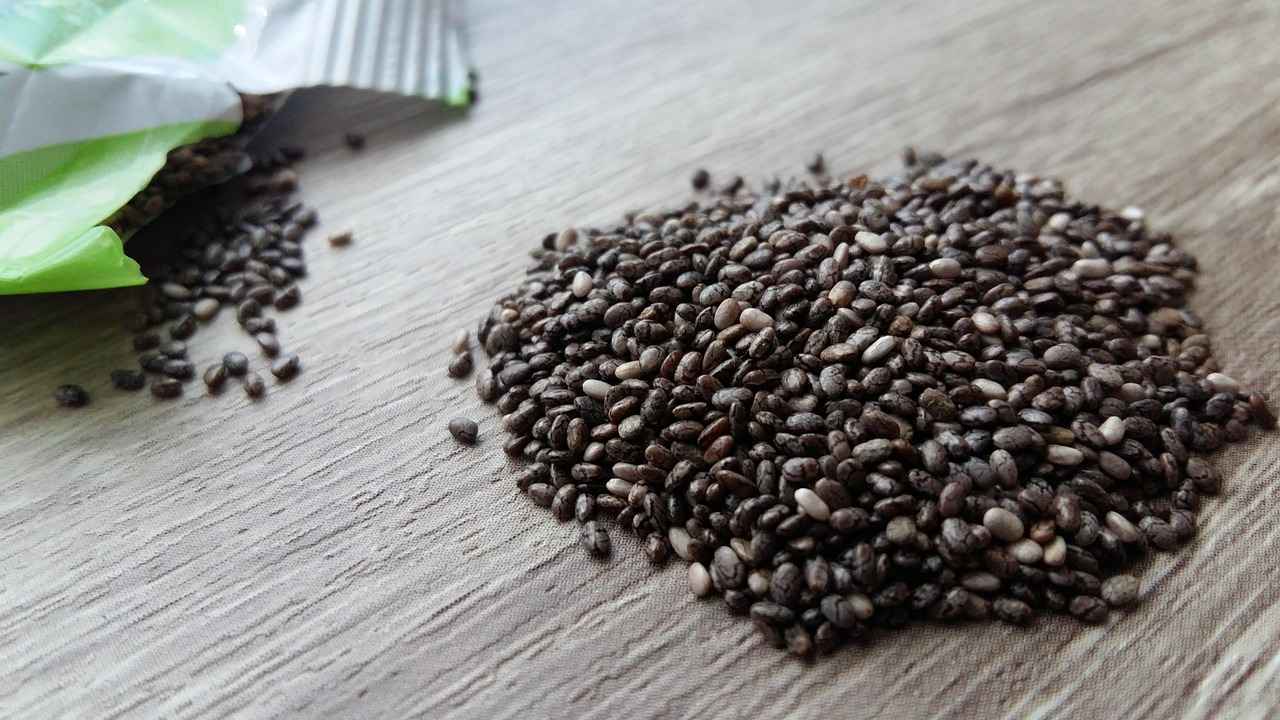
Are There Any Risks or Side Effects?
Chia seeds are celebrated for their numerous health benefits, but like any food, they come with potential risks and side effects, especially when consumed in large quantities. Understanding these risks can help you enjoy chia seeds while minimizing any adverse effects.
While chia seeds are generally safe for most individuals, some may encounter digestive issues if they consume them in excess. The most common side effects include:
- Bloating: Due to their high fiber content, consuming too many chia seeds can lead to bloating.
- Gas: Some people may experience increased gas production as their digestive system adjusts to the added fiber.
- Diarrhea: Overconsumption can result in diarrhea, particularly if not enough water is consumed alongside the seeds.
To enjoy the benefits of chia seeds while minimizing the risk of side effects, consider the following tips:
- Start Small: If you are new to chia seeds, begin with a small amount, such as 1 teaspoon, and gradually increase to avoid overwhelming your digestive system.
- Stay Hydrated: Since chia seeds absorb liquid and expand, it is crucial to drink plenty of water. Aim for at least 8 ounces of water for every tablespoon of chia seeds consumed.
- Soak Before Eating: Soaking chia seeds in water or another liquid before consumption can help them expand and form a gel-like consistency, making them easier to digest.
- Balance Your Diet: Ensure your overall diet is rich in fiber from various sources, which can help your digestive system adapt to the extra fiber from chia seeds.
While chia seeds are safe for most people, certain groups should exercise caution:
- Individuals with Digestive Disorders: Those with conditions like irritable bowel syndrome (IBS) may find that high-fiber foods exacerbate their symptoms.
- Pregnant or Nursing Women: While chia seeds can be beneficial, pregnant or nursing women should consult a healthcare provider before adding them to their diet.
- People on Blood Thinners: Chia seeds can affect blood clotting, so individuals taking anticoagulant medications should discuss their chia seed intake with a doctor.
Chia seeds can be a nutritious addition to your diet, offering numerous health benefits. However, being aware of the potential risks and side effects is essential. By starting with small amounts, staying hydrated, and soaking the seeds, you can enjoy their benefits while minimizing any negative effects. Always consult with a healthcare professional if you have concerns about including chia seeds in your diet, especially if you have pre-existing health conditions.
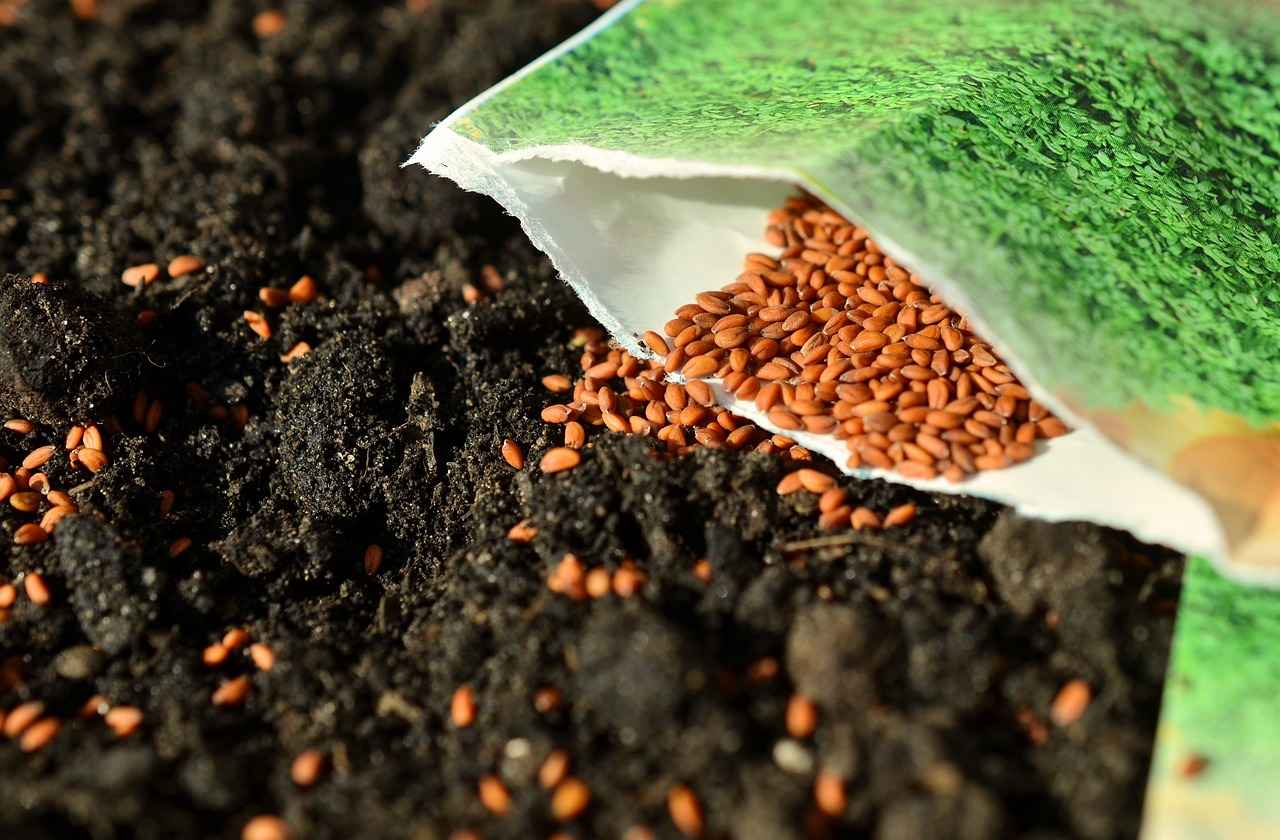
How to Store Chia Seeds Properly?
Proper storage of chia seeds is essential to maintain their freshness and nutritional value. These tiny seeds are packed with health benefits, but if not stored correctly, they can lose their potency and flavor. In this section, we will explore the best practices for storing chia seeds to extend their shelf life and ensure you reap all their benefits.
Chia seeds are sensitive to light, heat, and moisture, which can lead to rancidity and degradation of their nutritional profile. Storing them properly helps to preserve their omega-3 fatty acids, antioxidants, and fiber content, ensuring they remain a beneficial addition to your diet.
- Keep Them in an Airtight Container: To prevent exposure to air and moisture, store chia seeds in an airtight container. Glass jars or high-quality plastic containers work best.
- Choose a Cool, Dark Place: Light and heat can degrade the quality of chia seeds. Store them in a cool, dark place such as a pantry or cupboard away from direct sunlight.
- Refrigeration for Extended Freshness: For longer shelf life, consider refrigerating your chia seeds. This is especially important in warmer climates where heat can accelerate spoilage.
- Check Expiration Dates: Always check the expiration date on the packaging when you purchase chia seeds. While they can last for a long time, it’s crucial to use them before they expire for optimal benefits.
When stored properly, chia seeds can last up to two years without losing their nutritional value. However, it’s always best to consume them within a year for maximum freshness. Always check for any off-smells or unusual textures before use.
Yes, you can freeze chia seeds to extend their shelf life even further. Place them in a freezer-safe container, and they can last for several years. When you’re ready to use them, simply take out the desired amount and let them thaw at room temperature.
It’s important to be aware of the signs of spoiled chia seeds. If you notice any of the following, it’s best to discard them:
- Unpleasant Odor: Fresh chia seeds should have a neutral smell. A rancid or off smell indicates spoilage.
- Change in Color: Fresh chia seeds are typically black or white. Any discoloration can be a sign of degradation.
- Clumping or Moisture: If you find clumps or moisture in the container, this indicates that the seeds have absorbed moisture and may be spoiled.
By following these best practices, you can ensure that your chia seeds remain fresh and nutritious for as long as possible. Proper storage not only extends their shelf life but also preserves their health benefits, making them a valuable addition to your diet. Whether you’re adding them to smoothies, puddings, or baked goods, well-stored chia seeds will provide you with the maximum nutritional benefits.
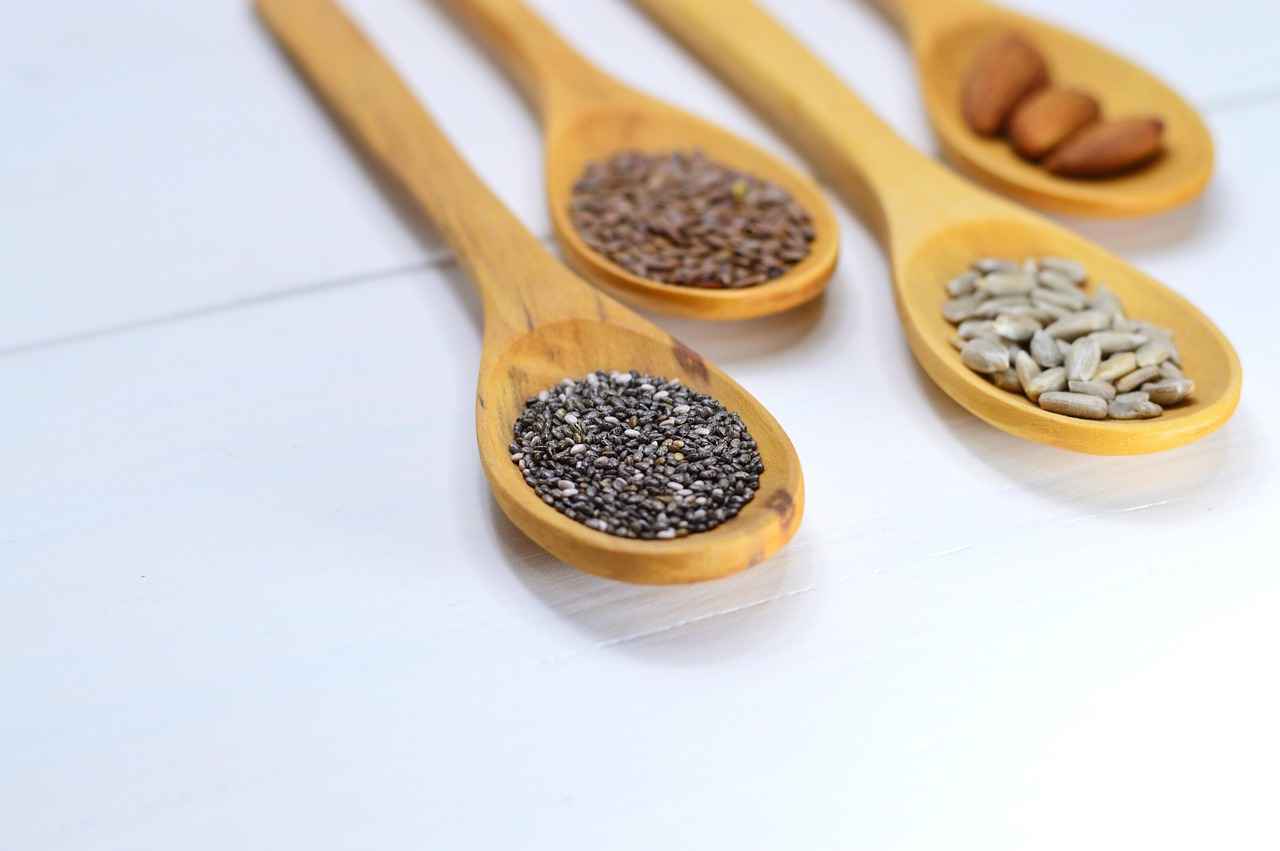
Where to Buy Quality Chia Seeds?
When it comes to incorporating chia seeds into your diet, finding high-quality options is crucial. These tiny seeds are not only packed with nutrients but also have the potential to enhance your overall health. This section will guide you on where to purchase chia seeds, both online and in physical stores, ensuring you get the best product available.
Investing in high-quality chia seeds guarantees that you receive the maximum health benefits. Low-quality seeds may be stale, contaminated, or lack the nutritional potency that chia seeds are known for. Always look for seeds that are:
- Organic: This ensures that no harmful pesticides or chemicals were used during cultivation.
- Non-GMO: Genetically modified organisms can affect the seeds’ nutritional value.
- Fresh: Check for packaging dates or expiration dates to ensure freshness.
Online shopping offers convenience and a wide variety of options. Here are some reliable platforms to consider:
- Amazon: A popular choice that offers numerous brands and customer reviews to help you make an informed decision.
- Health Food Websites: Websites like iHerb and Thrive Market specialize in health products and often carry organic chia seeds.
- Brand Websites: Purchasing directly from reputable brands like Nutiva or Navitas Organics can ensure quality and freshness.
If you prefer shopping in person, several types of stores typically carry chia seeds:
- Health Food Stores: Stores like Whole Foods and Sprouts are great places to find organic chia seeds.
- Supermarkets: Many mainstream grocery stores now have health food sections that include chia seeds.
- Bulk Food Stores: These stores often sell chia seeds in bulk, allowing you to buy exactly the amount you need.
Here are some practical tips to keep in mind when purchasing chia seeds:
- Check the Label: Look for certifications like USDA Organic or Non-GMO Project Verified.
- Read Reviews: Customer feedback can provide insights into the quality and freshness of the seeds.
- Compare Prices: Prices can vary significantly between brands and retailers, so it’s wise to shop around.
In summary, whether you choose to buy chia seeds online or in stores, prioritizing quality is essential for maximizing their health benefits. By following these guidelines, you can confidently select the best chia seeds to enhance your diet.
Frequently Asked Questions
- How do I prepare chia seeds for the first time?
To prepare chia seeds, start by soaking them in water or your favorite milk for at least 20 minutes. This allows them to expand and form a gel-like consistency, making them easier to digest and incorporate into your meals!
- Can I use any liquid to soak chia seeds?
Absolutely! You can soak chia seeds in water, almond milk, coconut milk, or even juice. Feel free to experiment with different liquids to add flavor and variety to your chia creations!
- What are the health benefits of chia seeds?
Chia seeds are a powerhouse of nutrients, offering benefits like improved digestion, heart health, and weight management. They are rich in omega-3 fatty acids, fiber, and antioxidants, making them a fantastic addition to your diet!
- Are there any side effects of eating chia seeds?
While chia seeds are generally safe, some people might experience digestive issues if they consume them in excess. It’s best to start with a small amount and gradually increase your intake to see how your body reacts!
- How should I store chia seeds?
To keep your chia seeds fresh, store them in an airtight container in a cool, dark place. This helps maintain their nutritional value and extends their shelf life!
- Where can I buy quality chia seeds?
You can find high-quality chia seeds at health food stores, supermarkets, or online retailers. Look for organic, non-GMO options to ensure you’re getting the best product!
